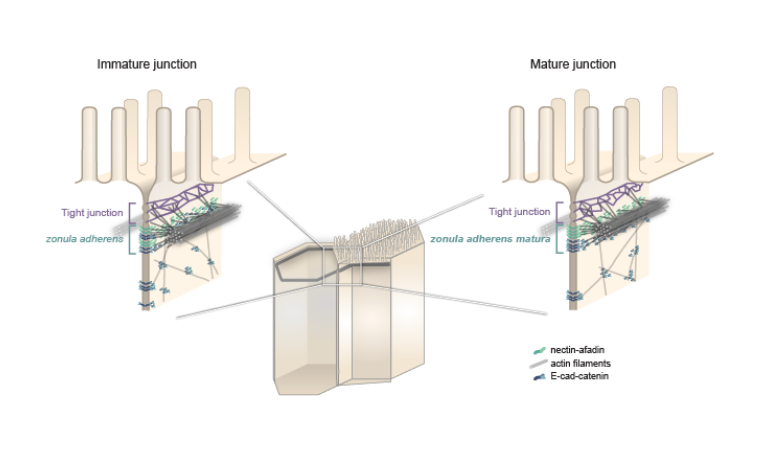The zonula adherens (ZA), a fundamental module of epithelial cell–cell adhesion initially observed in intestinal cells, is believed to comprise a single contractile actin belt linked via E-cadherin-catenin to the ones of neighboring cells. Reevaluating this structure using super-resolution microscopy on intestinal samples, Pierre Mangeol with Lenne and Le Bivic team show that the ZA consists of two distinct belts of adhesive complexes, a basal one with E-cad-catenin and an apical one with nectin–afadin. Contrary to the prevailing view, the major actin belt aligns with nectin and afadin, not E-cad-catenin. The authors further show that this organization depends on the cell maturation state and that the classical ZA found in textbooks corresponds to a less mature state of the intestinal junction. Therefore, they decided to call the junction found in mature cells the zonula adherens matura. Genetic and physical perturbations show that afadin is essential for force transmission across cell junctions. This work redefines the intestinal ZA architecture and prompts a reevaluation of how forces propagate within an epithelial sheet.
Shaping Life: An International Conference on Developmental Biology
The upcoming edition of Shaping Life, scheduled for June 3-6, 2025, will be held in Cassis.




